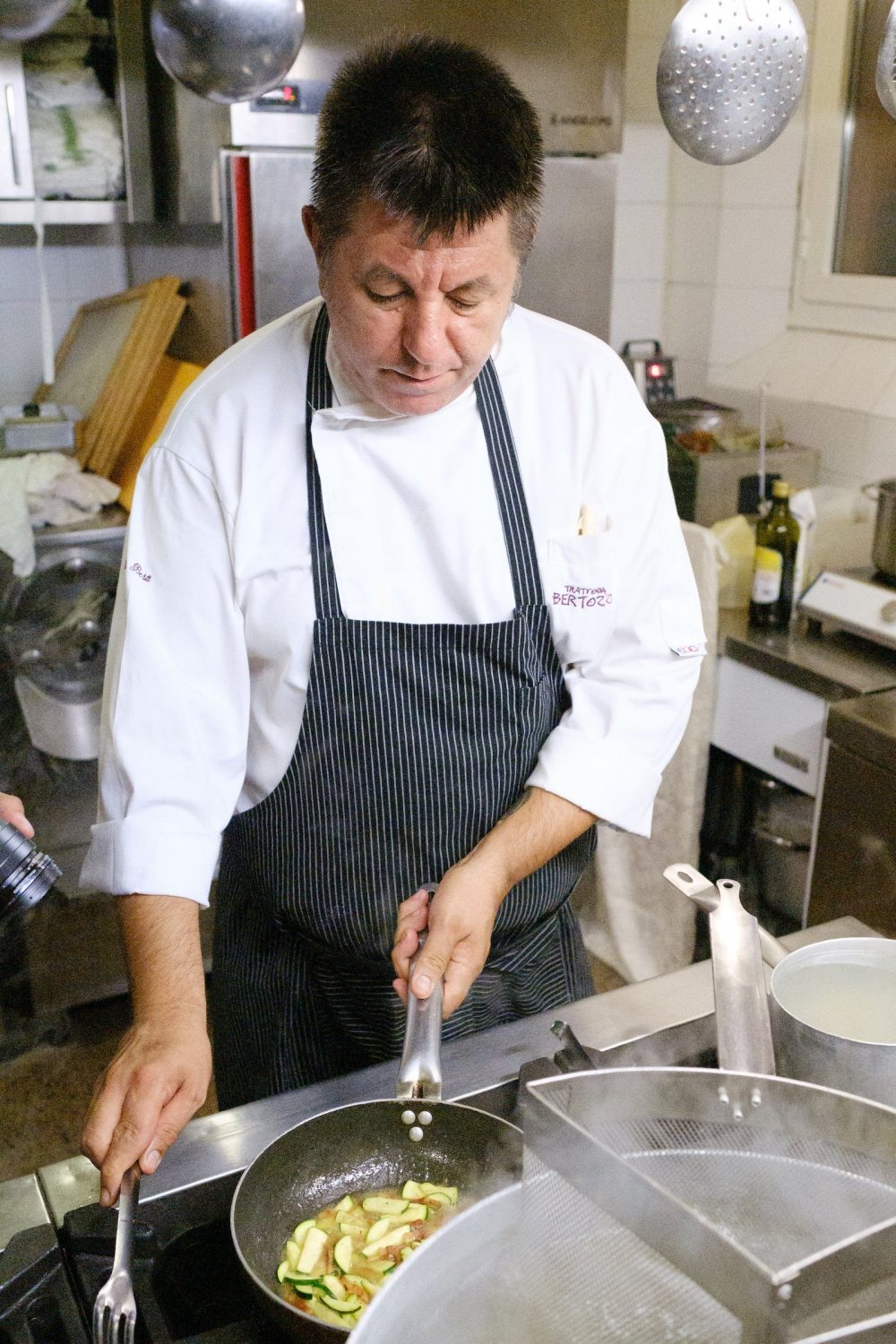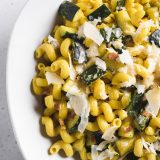The first thing that happens after we pull up in our white van outside of Trattoria Bertozzi, a short drive from central Bologna, is that our guide, Alessandro, is given a huge bear hug by another Alessandro, co-owner of the trattoria. This is a far cry from the heyday of the hushed temples of gastronomy—Alain Ducasse or Joël Robuchon—where one came to pray to the culinary gods. The two owners, Fabio Berti and Alessandro Gozzi, live full-throttle, hugging every ounce of enjoyment from life, whether Gozzi is spitting a mouthful of water at Berti or each of them sports a tortellini stuck to their foreheads.
Their menu starts out with the following: “You can make a call, send texts, take a selfie, play Candy Crush, take photos of dishes and tweet.” But instead, they suggest that “you have some chit-chat, even if about nothing, but with the illusion in our hearts that we are not yet dead.” A warning, of sorts, but done with great poetry. With that, I stepped into the kitchen to learn how to make gramigna Bertozzi guanciale, zucchine, zafferano e scaglie di Parmigiano: a curly, macaroni-style pasta with zucchini and a saffron cream sauce topped with shavings of Parmesan. I was also there to have a good time.
Bolognese cuisine is often called “Bologna la Grassa” (“Bologna the Fat”), since local ingredients both define the cooking and are inherently rich: Parmesan cheese, pork, veal, beef, butter, cream, truffles and cured meats such as prosciutto. Local menus are full of dishes such as cotoletta alla Bolognese (a thin slice of veal with prosciutto and cheese), ragù Bolognese (a pasta sauce and lasagna filling), brasato di manzo (braised beef) and large plates of salumi. Yet one also finds lighter, simpler dishes such as tagliatelle with onion ragout, tortellini in brodo, passatelli (a quick pasta made from breadcrumbs, Parmesan and eggs) or a large plate of sautéed wild mushrooms.

Fresh vegetables, however, tend to become ingredients rather than stars of the show. Zucchini is stuffed. Spinach is served with butter and Parmesan. You can get a simple mixed salad, but we are talking iceberg here—not an Alice Waters foraged mélange. So when it comes to a pasta dish with zucchini, do not expect California cuisine; in Bologna, zucchini is married to pasta with the addition of cream and cheese. Yet the artistry of balancing fat with flavor to produce a dish that is more than the sum of its parts—neither heavy nor bland, but light on the palate and full-throttle like the trattoria’s owners—is a thing to behold.
For gramigna Bertozzi, the method was simple: Sauté guanciale; add half-rounds of zucchini and then some of the pasta water (the pasta had been cooked separately); simmer a few minutes; add a bit of cream, saffron and some almost-cooked gramigna pasta; then finish cooking in the skillet to marry the pasta and sauce. Top with shards of Parmesan.
Here at Milk Street we had to switch out a couple of ingredients—pancetta for the harder-to-find guanciale, and cavatappi, gemelli or a similar pasta for gramigna—but we took the rest of the recipe pretty much as gospel. We did opt to use half-and-half instead of cream (although I am quite sure that neither Gozzi or Berti would understand the culinary point of half- and-half). We ended up with a quick skillet pasta that transformed a pound of zucchini into a full-flavored dish that echoes the essential lessons of Bolognese cuisine: background notes of cured meat, a counterpoint of flavor (saffron), something fresh (zucchini) and a bit of dairy and pasta cooking water to pull it all together. Oh, and a topping of Parmesan as a final flourish.
Perhaps this cuisine should be called“Cucina Divertimento” (fun)! And, while you are at it, stick a tortellini on your forehead, drink wine and laugh. That is the best recipe for a healthy heart.




